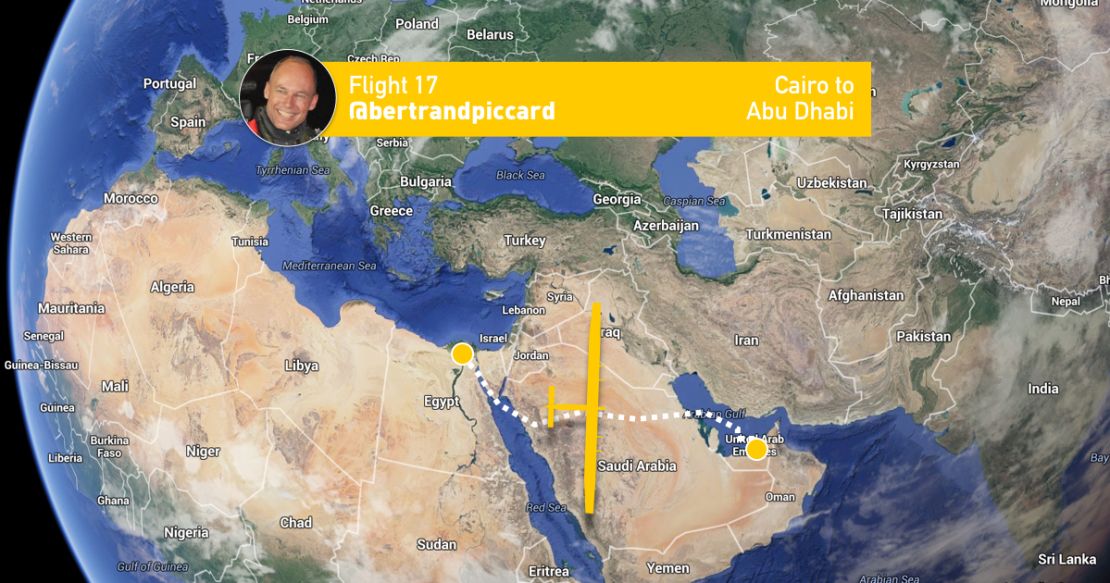Story highlights
The solar plane's global tour began 17 months ago
It is headed to the United Arab Emirates, where it started its journey
The end is in sight.
Solar-powered Solar Impulse 2 took off from Cairo early Sunday on the final leg of its global tour – the first time in history an aircraft of its kind has achieved a round-the-world flight using no fuel.
The plane is en route to Abu Dhabi in the United Arab Emirates, where its epic journey originated over a year ago.
It’s piloted by Bertrand Piccard, one of two pilots who have alternated on the journey’s 17 legs around the globe.
By the time he touches down in the Emirates, he and pilot Andre Borschberg will have traveled a total of 35,000 km (21,748 miles).
The lightweight aircraft, which only weighs as much as an SUV but has the wingspan of a Boeing 747, sits on the cusp of completing its milestone journey using only the power of the sun’s rays.
The plane had earlier secured a place in the record books by being the first plane to cross the Atlantic – from New York’s JFK airport to Seville in Spain, then also piloted by Piccard – without a single drop of fuel.
A peek into the Solar Impulse 2 cockpit in a historic trans-Atlantic flight
It also set the record for the longest solo flight – five days and five nights – without fuel, from Nagoya in Japan to Hawaii.

Inspiration
Piccard had been preparing for the flight for “years and years,” saying he’d been long inspired by the pioneers who wanted to cross the Atlantic to prove their way of transportation was mature.
“I met (American aviator) Charles Lindbergh when I was a child. I saw the balloons, the airships, the hot air balloons, steamboats – you know, every means of transportation wanted to cross the Atlantic, and now for the first time it’s a solar-powered airplane,” he said.
“What I’d like to show with my team is that clean technology today is showing incredible goals. You can fly now longer without fuel than with fuel, and you fly with the force of nature, you fly with the sun. It’s the new era now for energy and this is really what we’d like to inspire people to do,” he said.
The Solar Impulse 2 project is the brainchild of Piccard and Borschberg, a Swiss engineer and businessman. The aircraft is a single-seater, so the two men have shared the flying by taking different legs of the journey.
New NASA plane could eliminate gas-guzzling airliners
The plane – powered 100% by the sun – has completed 16 legs of its journey, and on course to complete the final one in about two days.
It was originally supposed to land in Abu Dhabi, where it began the trip in March 2015, by the end of last summer.
But a series of frustrating weather delays in China slowed progress for weeks, followed by an unexpected diversion to Japan, where the aircraft was damaged on the tarmac by a storm.

































